In recent years, Myanmar has been booming with tourism despite opening its doors in the 1990’s. Considered as the last frontier in Asia, its rich history gives you a little insight to what South East Asia used to be prior to tourism. Waves of tourists have been frolicking to the country, from 268 000 in 2010 to over 1.3 million in 2015 according to the statistics released by Myanmar Tourism. In comparison to my first visit mid-2015 and at the end of 2016, the country has developed dramatically.
Basics:
Myanmar uses two currencies; Burmese Kyats for everyday use and USD for higher end purchases or in hotels. With the rise in tourists entering the country, it was only the last couple of years that ATMs started becoming a common sight in major cities. Prior to this, you had to bring in your entire budget in USD and convert it to Burmese Kyats in the country.
Tip: ONLY crisp USD notes are accepted. Bills with any rips, folds, wrinkles or visible damage will be rejected. On the other hand, there are no issues with Kyats.
A lot of locals in Downtown Yangon have a good command in English and are keen to communicate to practice conversational English. It is a slightly different case once you get out of this area. Don’t fret, in other towns frequented by tourists, there is rarely any issue communicating in English. This is especially the case with those working in the tourism industry. If all else fails, communicating via signals works wonders.
Local males and married women (single women generally avoid it as it’s considered unattractive) frequently display red-stained teeth or spit along the roads due to their habit of chewing a combination of lime, tobacco, areca nut wrapped in betel leaf. This mind-altering substance gives the consumer a buzz. Unfortunately, studies have shown it to cause an increase oral cancer.
With developing electrical infrastructure, brownouts and power surges are possible. In most instances, power will return within a couple of minutes. In addition to this, most power plugs are two round-pinned (like Europe) or the occasional 3 pinned (UK style). If you’re lucky, there may be universal multi-adapters. WIFI isn’t the most reliable and it is terribly slow so it’s advisable to buy a local SIM card.
Itinerary:
There are several ways to get around Myanmar, the most common being the bus. The bus is time-consuming and often takes longer than expected but it is the cheapest option. There are trains and boats, while they can take the picturesque route, it is often painstakingly long. Alternatively, flying between cities is possible, however, it costs significantly higher. Navigating on Myanmar National Airlines, Myanmar Airways International or other Burmese airline websites can be tricky. The easiest option would be getting a travel agent to organise your air travel.
During a two week period, I travelled from Yangon to Bagan then over to Kalaw, the starting point of a 3-day and 2-night trek to Inle Lake and finally to Mandalay. My method of travel was by the buses. Often, I would book a seat the day prior to departure and there are stands near the bus station to purchase tickets.
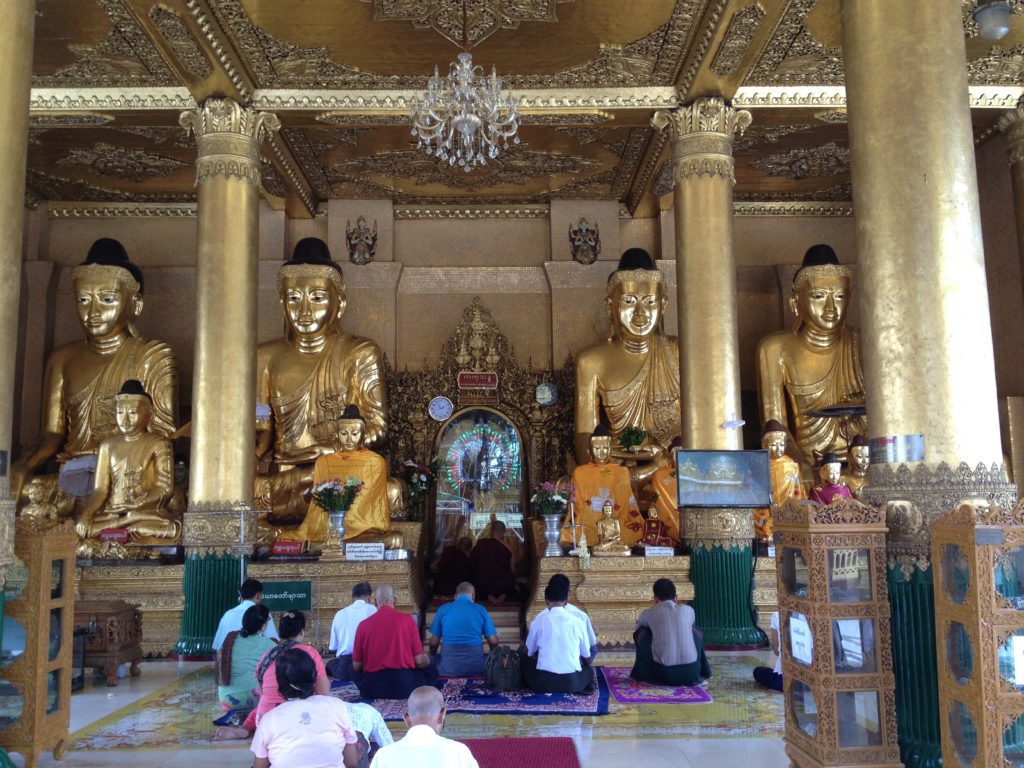
Yangon
Myanmar’s largest city and the starting point of most traveller’s journey to the country. The most notable structure in the city (and country) is Shwedagon Pagoda. Yangon offers an insight into its colonial past while strolling down Pansodan Street and the country’s advancement into modernisation. To escape the hustle and bustle of the city, it is easy to hop on the Circle Line taking you to the outskirts of the city for a cheap day out.
Read more about what to do in Yangon in this Off the Beaten Path Guide.
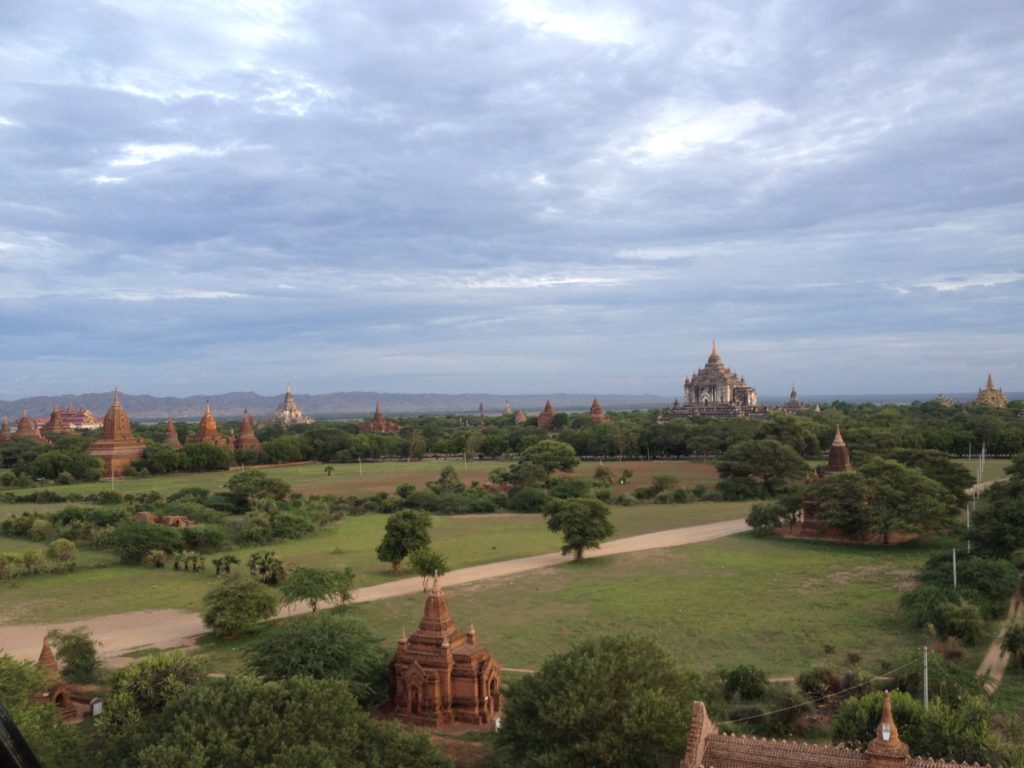
Bagan
Home to an astonishing 2 200 pagodas and stupas, it’s a wonder why Bagan has yet to make it on the UNESCO World Heritage Site list. Over 10 000 Buddhist temples, stupas and pagodas were constructed in this ancient city, the capital of the Kingdom of Pagan during the 9th – 13th century. Unlike it’s Cambodian (Angkor) equivalent, there aren’t massive crowds. As the entire city of Bagan is classified as an archaeological zone, there is not as much competition to find a spot to catch the sunrise or sunset. Regardless of which temple you decide to ascend, the views would be pretty amazing.As of 2016, a 3-day pass into the Bagan Archaeological
As of 2016, a 3-day pass into the Bagan Archaeological Zone will cost USD$20. This pass should always be carried as you can be randomly checked. During the dry months, it’s not uncommon to see several hot air balloons floating over the horizon during the sunrise. There are several ways to explore the ancient city; by electric-bike (e-bike), chartered driver or by foot. Personally, the best way to cover as much ground while remaining budget friendly is hiring an e-bike – just be warned, don’t abuse the “turbo” button, it drains the battery.
Tip: Ask the locals the lesser known temples to catch the sunrise/sunset from.
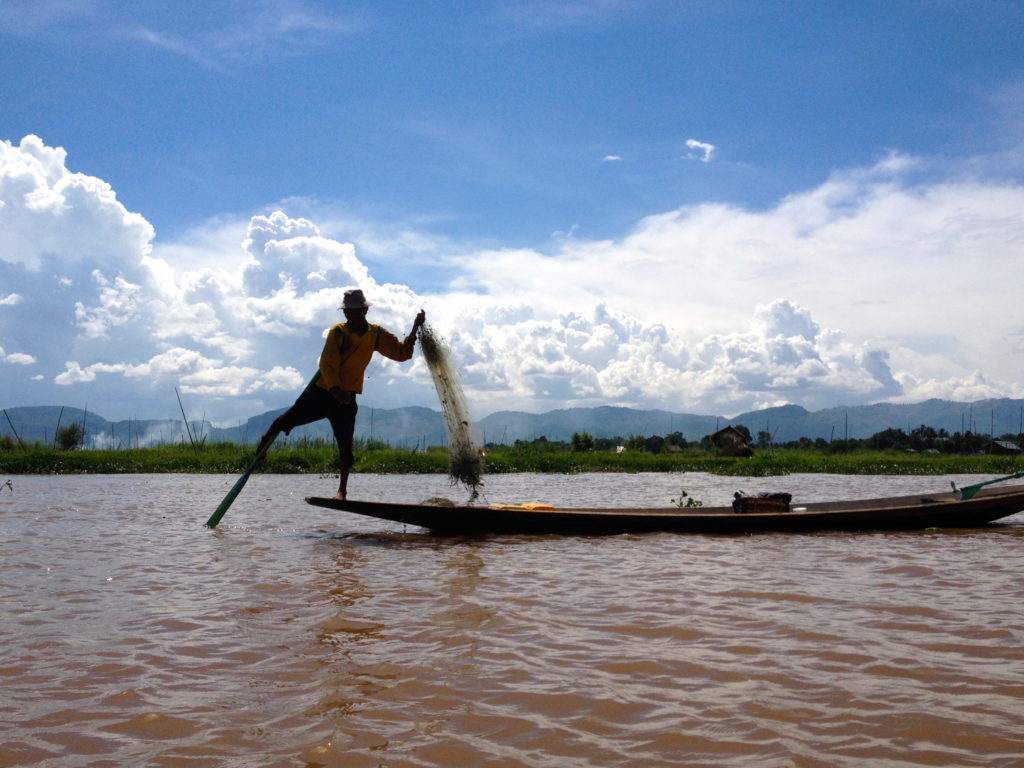
Inle Lake
Inle Lake houses several factories built on stilts over the water. Organised tours take you to various factories producing different products. While the region boasts a prominent weaving industry, the women have gained fame for crafting handmade cigars. They skillfully roll Cheroot, a distinctive Burmese cigar filled with tobacco. Typically, they are flavourless but Inle Lake is notable for their flavoured cheroots. Liquorice-flavoured cigars are the most common, which uses star anise to give its flavour. I am not a smoker but I did quite like the flavoured cigars.
Tip: Instead of buying an entire pack, you can ask the ladies for one cigar to try.
Apart from visiting the factories, there is a winery worth visiting. Inle Lake is easily accessible by bicycle. Hope on one and head over to “Red Mountain Winery”. It’s an interesting place to visit with a group of friends for a day of wine tasting (drink responsibly). Free wine tours around the grounds available.

Mandalay
This bustling city is quite similar to its counterpart of Yangon in terms of development. It’s the former royal capital of Northern Myanmar. What was once completely destroyed during World War II, Mandalay Palace has now restored to its former glory. Using traditional Burmese architecture, it was built by the last Burmese monarchy. This palace is located in the city centre and is surrounded by high walls and a moat.
While there are countless of religious sites to visit in Mandalay, there are a lot of attractions on the outskirts of the city. Several ancient cities are scattered out of the city that worth checking out. Also found just out of Mandalay is U-Bein Bridge, the world’s oldest and longest (1.2km) teakwood bridge. It spans across Taungthaman Lake and it is a favourite spot amongst locals to enjoy the sunset.
Extending your trip:
The above mentioned are common cities frequented by travellers. There are a lot more places than Myanmar has to offer. With plenty of opportunities to extend your trip, below are a few suggestions. They are marked with a star on the previous map to indicate their locality. The following includes a collaboration with fellow travel bloggers.
Hsipaw
This laid back town boasts plenty of trekking opportunities. It is dubbed “Little Bagan” due to its endless pagodas and similar atmosphere. Navigating this town is easy and inexpensive on a bike, seeing various nature sights such as waterfalls, rock formations and natural pools.
Hpa-an (by Bianca @ The Altruistic Traveller)
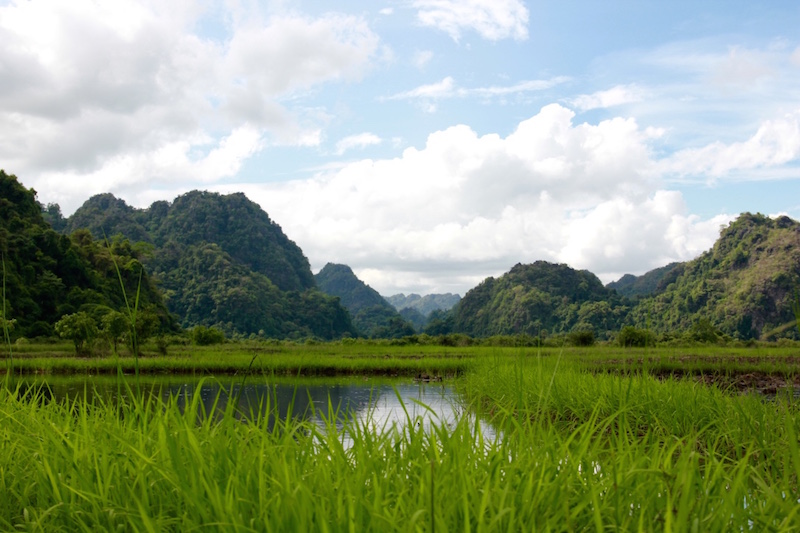
Hpa-An is located nearby the border crossing between Thailand and Myanmar. If crossing overland it can either serve as your first or last stop through this great country. The town centre doesn’t have too much on offer, however, the wonders of Hpa-An lie on the town’s outskirts where you can witness some of the most spectacular scenery in Asia. Take one of the full day tours offered by the famous Soe Brother’s Guesthouse and have the chance to visit magnificent ancient Buddhist caves, and take a slow canoe ride through untouched regions full of lush green fields and beautiful mountains that reflect off the water like a perfect mirror image.
Check out more of Bianca’s travels here.
Naypyidaw
In 2005, Myanmar moved its capital from Yangon to Naypyidaw. Unlike most of Myanmar, Naypyidaw boasts stable electricity and high-speed internet. However, the city is primarily designed for government staff, and there aren’t many tourist activities available. It was an expectation that by moving the government offices to the capital, it would bring massive waves of people, however, that didn’t happen. For the most part, the multi-laned highways through the city are empty. With modern buildings and an almost abandoned feel, it is possible to forget which country you’re in.
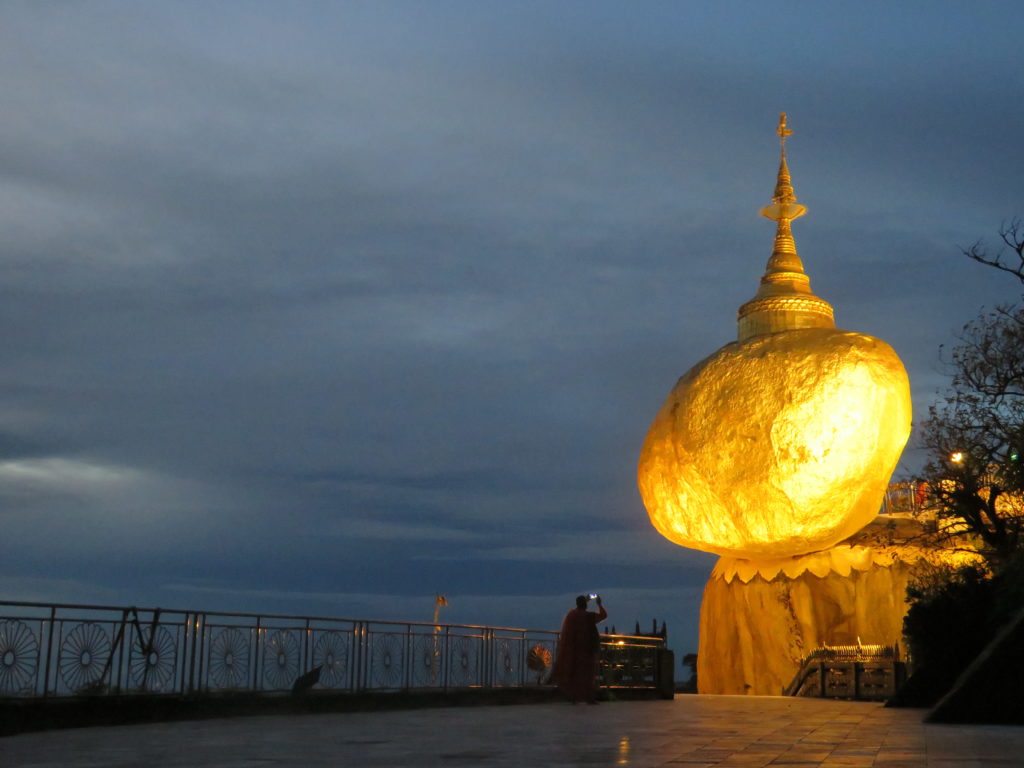
Golden Rock/Kyaiktiyo (by Erin @ 10 Miles Behind Me)
My trip to Golden Rock was a definite highlight during my month in Myanmar. From Yangon, I took a 5-hr bus ride to the base of the mountain. From there, the way up the mountain is an uncomfortable ride on a huge open-back truck with rows of seating. If you have long legs, make sure to sit in the first row. Some do this as a day trip, from either Yangon or Bago on the way, but I stayed overnight on top of the mountain. There are a few food stands and restaurants and one hotel, and it’s quite relaxing.
The Golden Rock, adorned with gold leaf and crowned by a golden pagoda, precariously balances atop another rock. Legend holds that the rocks maintain their position due to the delicate balance of the golden one, supported by a few strands of the Buddha’s hair. Despite the rain and fog on the day of my visit, the rock brightly stood out against the mist. Before the sun went down, the fog cleared away and I was able to experience the incredible view from the top of the mountain. There are a few other pagodas and paths to walk around, but I spent the most time staring mesmerised at the rock itself.
Check out more of Erin’s travels here.

That’s a wrap! Myanmar is a beautiful country, with so much history and amazing sights. Even visiting all these amazing places, you would have barely scratched the surface. Besides Yangon and Mandalay, you’ll be out in the Burmese countryside, observing daily life, away from the bustling cities. Exploring the myriad temples is an adventure reminiscent of Tomb Raider, with their thousands of intricate structures ready to captivate you. Experience the incredibly warm welcome from the locals, as kids often flash smiles and wave, spreading their infectious joy. Seize the opportunity to visit Myanmar, witness its charm firsthand, experience it before development alters its essence, and explore this treasure that awaits discovery.
Peace, love and good vibes.

Leave a Reply